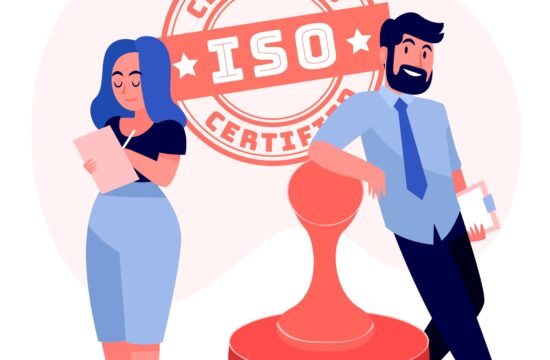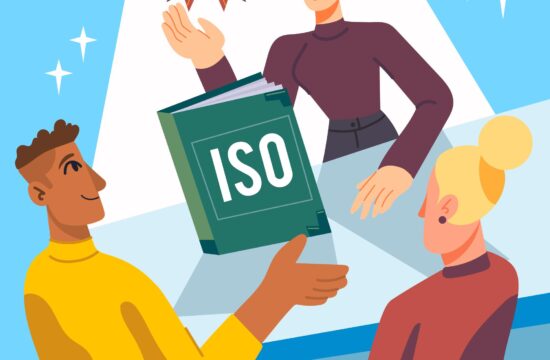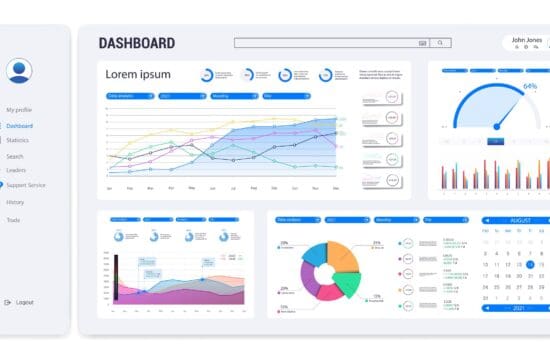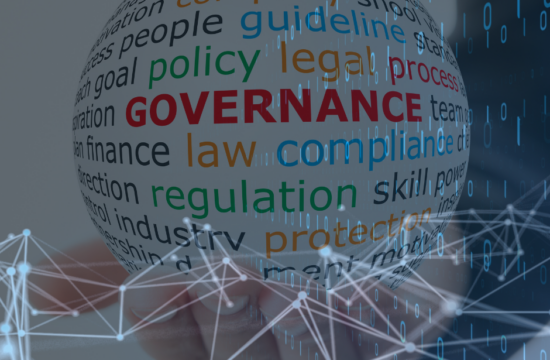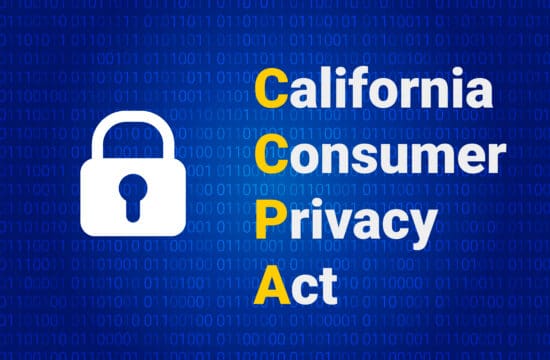VRM deals with managing and considering risks commencing from any third-party vendors and suppliers of IT services and products. Vendor risk management programs are involved with making sure that any IT service providers and vendors, and third-party products do not result in any financial loss, reputational damage, or business disruption.
The relevant programs help identify and eliminate legal liabilities, business uncertainties, and reputational defamation. Of course, we see plenty of businesses preferring outsourcing, which is why third-party VRM is becoming a vital part of any management framework.
Businesses entrust more of their processes to business partners and third parties, so they can easily focus on doing their best. Particularly, they ensure the dedicated provider manages data security, information security, and cyber security simultaneously. As a result, it helps recognize and mitigate the risk of data breaches and cyber attacks from third-party vendors at the right time, without any delay. Additionally, with the WFH digital amendment, the popularity of VRM has become a board-level permanent concern, normally based on jurisdiction, size, industry, applicable laws, and more. Need more details on this? Keep on reading.
What is the primary difference between a vendor, third party, supplier, and service provider?
When discussing VRM, it is quite necessary to record that several businesses use different terminologies while referring to the term vendor. In many situations, the vendor is used mutually and reciprocally with the supplier, third party, and service provider. Nevertheless, in different cases, these specific terms carry slight differences.
A quick illustration of this would be the term “supplier,” which is often used in connection with physical goods. At the same time, service providers and vendors are occasionally used by IT companies. Whereas “third party” is most likely considered one of the most comprehensive terms, circumscribing all of the earlier mentioned terms. For many individuals, VRM and third-party risk management are equivalent.
Why is VRM so important for businesses out there?
Progressively, businesses deploy important tasks to their vendors, which comes with both risks and rewards. Working with a third-party vendor can help you function more effectively and save enough money, creating many susceptibilities. Recently, the SolarWinds Cyberattack, COVID-19 Pandemic, the Colonial Pipeline Attack, as well as the other ransomware breaches have made it clear that vendor-related risks do exist. Without any doubt, such events have impacted millions of businesses and their minor parties – regardless of company size, industry, and region.
Here are a couple of hypothetical scenarios to illustrate why vendor risk management is important.
Let’s suppose your company relies on IBM cloud services to run its specific mobile application. In any situation, if IBM’s solution experiences any interruption, your clients/customers will not be able to access the application. Another quick example would be for a ride-hailing service, such as Lyft, and they rely on contracted chauffeurs. If the chauffeurs go on strike, that can eventually bring major challenges while hurting the brand’s reputation and bottom line.

Now, this is why outsourcing vendor risk management with a reliable provider is a critical component for running your business smoothly. After all, it is much more convenient to benefit from the expertise that your business may not have in-house. The biggest downside your business may encounter without outsourcing would be relying on third-party vendors and being in a vulnerable spot.
A worthwhile investment in a VRM program can reduce the business’s overall risk exposure and impact of troublesome events. This is not it; there’s a lot more to know. But, once implemented successfully, businesses can assess the worth, bring new vendors on board, and get the right tools in the right place – faster and efficiently.
Furthermore, a VRM can allow your business to evaluate their vendor tie-up with time, identify new risks as they appear, and measure vendor performance effectively. Below is the plethora of other reasons why vendor risk management is so important, together with the ability to:
- Reducing expenses by recognizing unnecessary third parties
- Understand how data circulates and who requires the access
- Making third party vendors accountable to contracts
- Keeping a check on security controls
- Directing risk mitigation efforts
- Complying with industry requirements and global regulations
- Maintaining records for compliance
- Offboarding vendors
How do businesses generally administer vendor risk?
Typically, there is no one-size-fits-all approach to managing risks related to vendors. Every business is different. Even so, there are some standard measures that every business with a robust VRM program must consider. We have mentioned some of them below; feel free to look.
- Selecting your assessment standard and control framework
- Describing your risk appetite with a statement
- Classifying vendors based on vitalness
- Tracking key terms in vendor contracts
- Controlling risks down to the specific service/product offered by vendors
- Monitoring vendor performance and risks with time
- Identifying the most critical risks as per the business
- Detailed reporting on necessary metrics related to vendors
- Tracking vital attributes and creating inventory related to vendors.
So what is involved in implementing a VRM program?
Fundamentally, this significantly depends on the scale of your chosen program and the size of your business. Having said that, several program applications follow a standard methodology, which has been explained in this quick rundown below.
- Understand your case and requirements, and choose software accordingly.
- Go through the key terms and understand how the program can meet your goals.
- Another step that makes a huge difference is to import a vendor list to configure the characteristics that you would prefer to keep track of. If you don’t have a particular list of your own, you can conduct a quick discovery assessment and leverage a portal for business users.
- With hundreds and thousands of vendors, it may get quite difficult to understand which ones matter the most. Usually, vendor risk groups solve this issue by simply classifying the vendors into different categories. The most often applied tiers are Tier 1 for high criticality and risk, Tier 2 for medium criticality and risk, and Tier 3 for low criticality and risk.
- Furthermore, the moment comes to select an ideal assessment framework as many to choose from. There is no “fair” assessment that equally works for everyone. However, there is probably an ideal framework for different businesses and industries that may work suitably and meet the standards of CSA CAIQ, ISO 27001, ISO 27701, SIG LITE, SIG CORE, and NIST SP 800-53.
- After choosing a framework, you are all set to develop a methodology for assessment. However, it is important to consider these questions in the same place. Take a look:
- Who would be conducting assessments?
- Who should have the privilege to launch a vendor assessment?
- How will you recognize whether you need a new vendor assessment?
- How often do you need to reevaluate your vendors?
- Who is going to review the assessment?
- Are follow-ups required based on the initial responses?
- Which questions from the overall assessment will generate risks?
- How much effort are you going to put into validating the responses?
- How are you going to aggregate and report the flagged risks?
Another thing to keep in mind while authenticating answers from the assessment is to understand the opinions clearly. For vendors with low risk, the majority of the companies prefer to accept a self-attestation. On the other hand, businesses favor a more detailed validation approach for vendors with medium to high risks, like an onsite audit. Still, with the COVID-19 pandemic, several businesses opt for remote audits instead of in-person audits.
7. Characterizing your control framework and risk methodology is the next step in the row. Every VRM needs a particular way to assess the risks, so you need a control framework. Businesses use a risk matrix with probability and impact as the centerline. Alternatively, they go for flagging risks as per levels, risk management programs that develop more comprehensive risk formulas.
8. Once you are done with the risk methodology, the time comes to outline the various potential VRM workflows. It would be best to consider applying automation to save more time. Many professionals from vendor management backgrounds prefer to go this way when they have to:
- add, onboard new vendors
- delegate necessary mitigation actions
- assign risk owners
- tier vendors
- measure inherent risks
- Send notifications to shareholders.
- Trigger vendor performance
- Organize, run, and share reports
- Arrange annual vendor assessments.
Every business has a one-of-a-kind workflow for risk management. To organize them, they have to focus better on identifying the most redundant tasks and processes. In addition, they need to start with configuring automation for those particular tasks. As small fractions are automated little by little, efficiency will increase, and your team will reap cost-effective rewards.
9. Every third-party risk vendor has a specific wish list of analytics and reports they would like access to. There’s no better time to make this data accessible than implementing the vendor risk management program. So, ask yourself, what are your current must-haves for reporting. What details would be more helpful to exhibit on the dashboard? The clearest cut metrics that are often tracked are:
- Vendors by risk level
- Total number of vendors
- Number of expired or expiring vendor contracts
- Current status on all assessments
- Risks by stage, workflow, level, and history over time
- Risks to your subsidiaries and parent organizations.
10. When it comes to refining vendor risk management programs over time, you need to know that they are not a static discipline. New requirements, updates, and threats will constantly come up, which is why it is necessary to take a step back from time to time to evaluate if your particular program is hitting the mark or not. If not, then what are the underlying reasons?
Everything you need to know about vendor risk management lifecycle?
Well, this completely relies on the scenario of how a vendor relationship makes away with time. In many cases, VRM is referred to as a process that describes the engagements that businesses normally have with their vendors. The lifecycle will include the following stages:
- Identification
- Assessment and Selection
- Risk mitigation
- Entering into an Agreement and Procurement
- Detailed reporting and Recordkeeping
- In-process monitoring
- Onboarding vendors
On the contrary, the lifecycle of VRM is often referred to as third-party risk management, for which details are here.
How to conduct better risk assessments?
This may typically involve a questionnaire that businesses use to evaluate and vet their ongoing and future vendors. Next, the specific risk analysis process is made to recognize and find out the potential complications of working with any vendor. This is normally done by estimating the vendor’s values, policies, goals, security controls, procedures, and relevant contributing elements. By doing so, businesses will determine if the benefits outweigh the complications of working with a third-party vendor.
Now many of you may wonder what could be the best practices to improve your likelihood of risk assessment success. Here are a few tips to go through.
- Before evaluating the vendors, it is critical to take a step back and determine which risks matter the most to your business. These may come in different forms like geographically, fourth party, cybersecurity, replacements, operational, privacy, strategic, reputational, business continuity, financial, environmental, business continuity, concentration, and many more. Remember that all these risks will also depend on your program goals. The most well-defined VRM program can get very coarse with all these different risks they track, which ultimately allows them to understand the business’s overall risk exposure better.
- Now the moment comes to assess the vendor’s services and products, which will definitely have distinct security measures in place. As a hypothetical, vendors may sell separate products, which may have their compliance certifications and security controls.
- Like any other redundant process, businesses can automate the actions included in handling assessments. Go through the internal processes to identify areas in your risk assessment workflow that can be performed automatically. Automation examples involve auto marking risks, delegating risk owners, and setting off reassessments based on an expiring contract or freshly identified risk.
- Further comes getting the vendor to answer the assessment, which can be a highly precise process. Determine how you can make the whole process easier for vendors. For instance, allow them to have free questionnaire response automation tools or motivate them to participate in a risk exchange program.
- Ultimately, risks can change with time. So what events are more prone to risks that might need an assessment. New risks frequently arise with events like:
- internal process changes
- Acquisitions, mergers, or divestitures
- Product updates
- New regulations
- Unethical actions or negative news
- Natural disasters
- Employee reductions
How do risk exchanges help with VRM?
Third-party risk exchanges help promote the exchange of VRM, together with evidence and documentation. With a risk exchange, you can approach the vendor for a pre-completed risk assessment. These evaluations are generally based on industry standards like ISO, NIST, or SIG Lite.
A risk exchange improves the VRM program by allowing the businesses to get the vendor assessment done efficiently while eliminating the assessment-related and time-consuming work. For all of your vendors, risk exchanges can help save time by working together and making the VRM process better for everyone involved.
Benefits to expect from a VRM software
Without any doubt, VRM software helps build and automate the risk management program. From onboarding vendors to evaluating and identifying them, monitoring changes over time, and offboarding when required, VRM software can be of great help. Additional benefits to mention are:
- Faster risk assessments.
- Better vendor visibility.
- Reduced risks.
- Increased security & customer trust.
- Cost savings.
- Streamlined evaluation and onboarding.
- Reduced redundancy.
- Improved reporting and analytics.
Want to know more about how Secuvy can help your business scale your VRM program? Request a demo today!

